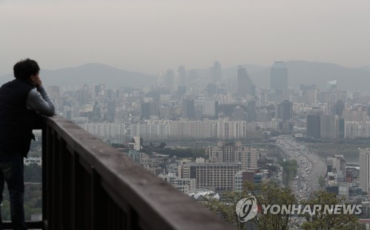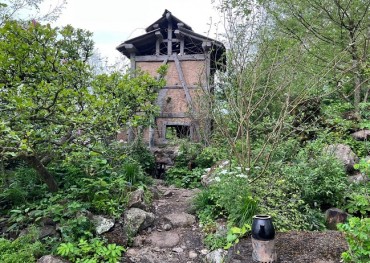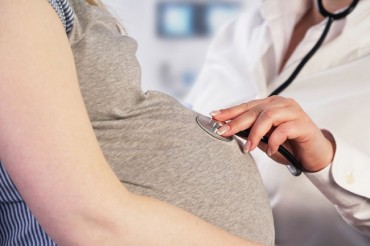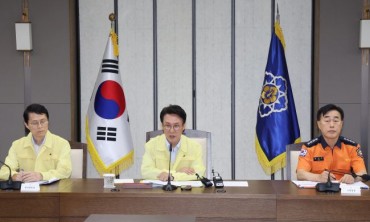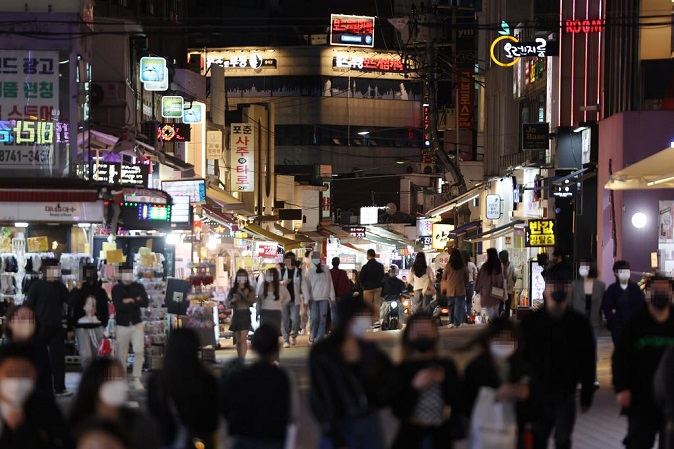
A street in Hongdae, one of the busiest entertainment districts in Seoul, is crowded with people on April 13, 2022, as South Korea moves to ease antivirus social distancing rules. (Yonhap)
SEOUL, April 15 (Korea Bizwire) — South Korea will lift all COVID-19 social distancing rules, except a mask mandate, next week, Prime Minister Kim Boo-kyum said Friday, marking the first time all restrictions have been lifted since the pandemic began two years ago.
Starting Monday, restaurants, cafes and other small businesses will be able to operate freely without a curfew, while the limit on the size of private gatherings will be removed, Kim said during a COVID-19 response meeting.
Currently, such businesses are allowed to open until midnight, and private gatherings are capped at 10 people.
“The omicron has shown signs of weakening significantly after peaking in the third week of March,” Kim said. “As the virus situation is stabilized and capabilities of our medical system are confirmed, the government decided to boldly lift social distancing measures.”
The mask mandate, however, will be kept for now, as the government monitors the trend in COVID-19 infections over the next two weeks, Kim said.
“Indoor mask wearing will be unavoidable for a considerable time,” Kim said. “With regard to outdoor mask wearing, which poses a relatively lower risk, we will decide after two weeks based on a review of the virus situation.”
The prime minister also announced the removal of a 299-person cap on large-scale events and rallies, as well as the 70 percent capacity cap on houses of worship.
Eating inside movie theaters, indoor gyms and religious facilities will be permitted starting April 25, a week after the removal of all other restrictions, to allow time for the relevant authorities and industries to prepare measures to protect users from getting infected, he said.
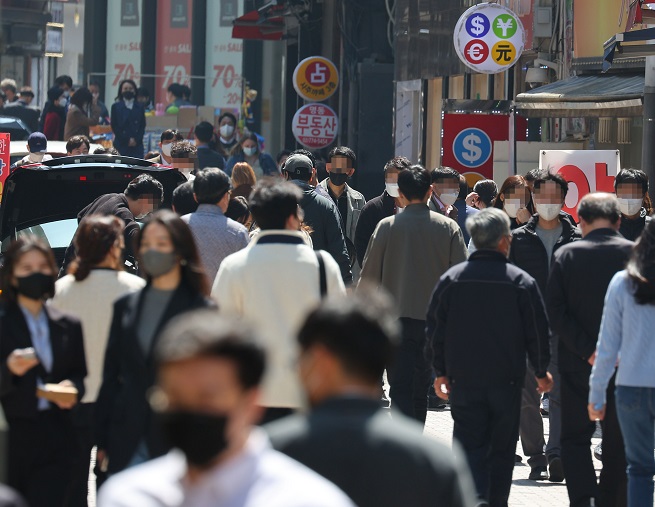
This photo, taken April 8, 2022, shows a street crowded with people wearing masks in Myeongdong, which used to be a popular tourist hotspot before the COVID-19 pandemic outbreak two years ago. (Yonhap)
South Korea first introduced social distancing measures in March 2020, starting with a recommendation to suspend operations religious facilities and select businesses.
In January 2021, the government imposed a five-person limit on private gatherings nationwide before tightening the restrictions further to include a two-person cap on gatherings at nighttime and takeout only at cafes.
Under a “phased return to normal” scheme, the government had relaxed distancing rules last November but later rolled them back as case numbers soared.
“Thus, we will be able to start again on the road to a phased return to normal,” Kim said.
“Even as the government pushes for a return to normal, we will prepare thoroughly under the assumption that the risk can return. We will strengthen our monitoring system against new variants and a resurgence, and prepare to promptly reactivate our medical resources at a corresponding level in the event a crisis is detected,” he added.
On April 25, Kim said the government will downgrade the infectious disease level of COVID-19 from a “Class 1 infectious disease” to a “Class 2.” That would allow patients to receive treatment at local clinics and hospitals while maintaining their regular lives without quarantine.
To minimize confusion and allow sufficient time for the health system to adjust, the corresponding changes will be implemented over a four-week transitional period, leaving the new administration to assess and decide whether to completely remove the classification.
“When the class is completely adjusted at a later time, there will be many changes, and the quarantine mandate that has been in place for over two years will be changed to a recommendation, while at-home treatments that were introduced at the end of last year will no longer apply,” he said.
As a Class 1 disease, the highest in a four-tier classification system, COVID-19 currently falls under the same category as diseases such as the Ebola virus and the Middle East respiratory syndrome.
(Yonhap)



